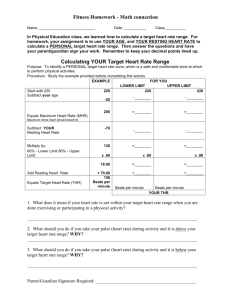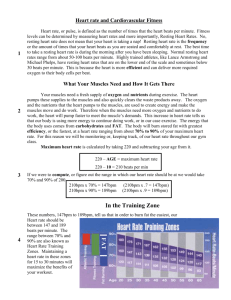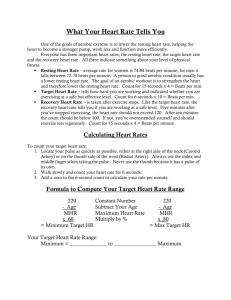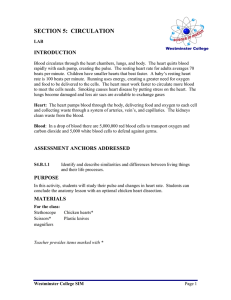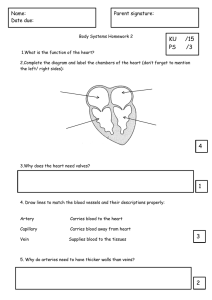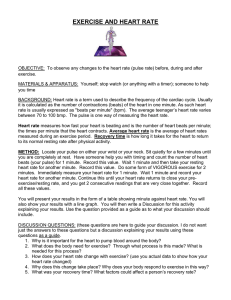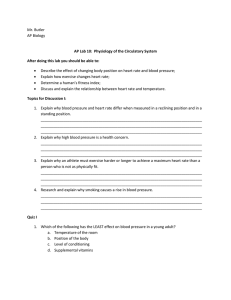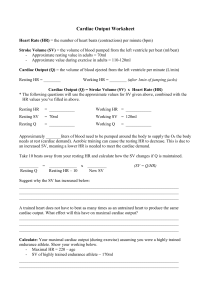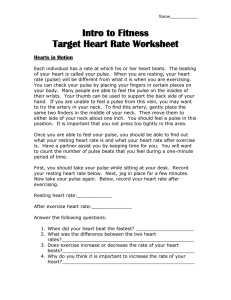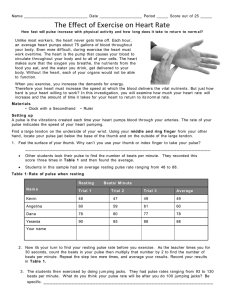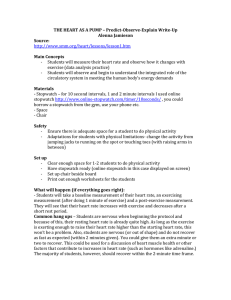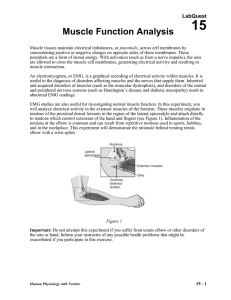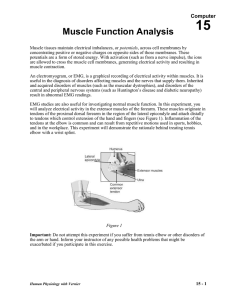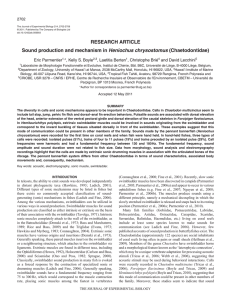Heart Rate Lab *include in your lab write
advertisement
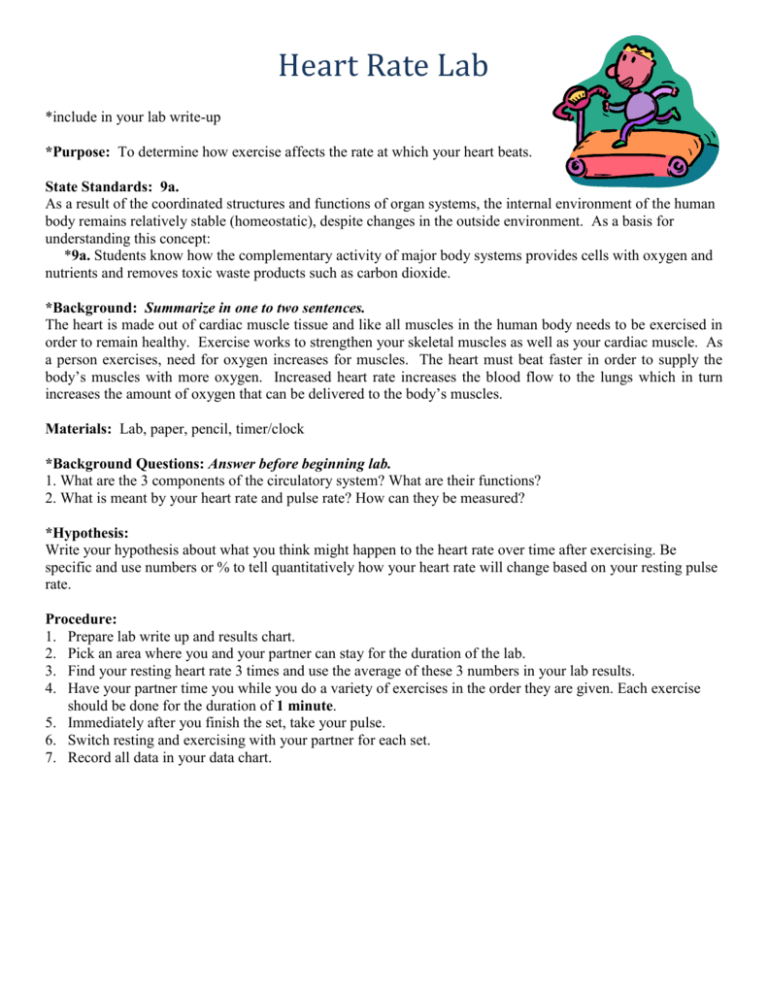
Heart Rate Lab *include in your lab write-up *Purpose: To determine how exercise affects the rate at which your heart beats. State Standards: 9a. As a result of the coordinated structures and functions of organ systems, the internal environment of the human body remains relatively stable (homeostatic), despite changes in the outside environment. As a basis for understanding this concept: *9a. Students know how the complementary activity of major body systems provides cells with oxygen and nutrients and removes toxic waste products such as carbon dioxide. *Background: Summarize in one to two sentences. The heart is made out of cardiac muscle tissue and like all muscles in the human body needs to be exercised in order to remain healthy. Exercise works to strengthen your skeletal muscles as well as your cardiac muscle. As a person exercises, need for oxygen increases for muscles. The heart must beat faster in order to supply the body’s muscles with more oxygen. Increased heart rate increases the blood flow to the lungs which in turn increases the amount of oxygen that can be delivered to the body’s muscles. Materials: Lab, paper, pencil, timer/clock *Background Questions: Answer before beginning lab. 1. What are the 3 components of the circulatory system? What are their functions? 2. What is meant by your heart rate and pulse rate? How can they be measured? *Hypothesis: Write your hypothesis about what you think might happen to the heart rate over time after exercising. Be specific and use numbers or % to tell quantitatively how your heart rate will change based on your resting pulse rate. Procedure: 1. Prepare lab write up and results chart. 2. Pick an area where you and your partner can stay for the duration of the lab. 3. Find your resting heart rate 3 times and use the average of these 3 numbers in your lab results. 4. Have your partner time you while you do a variety of exercises in the order they are given. Each exercise should be done for the duration of 1 minute. 5. Immediately after you finish the set, take your pulse. 6. Switch resting and exercising with your partner for each set. 7. Record all data in your data chart. *Data: # of heart beats/minute Avg Resting Heart Rate Heart Rate after Knee Slaps Heart Rate after Squats Heart Rate after Lunges Heart Rate after Jumping Jacks Heart Rate after Shooting Hoops Heart Rate after Push Ups/Knee Ups Heart Rate after Burpees (Optional) *Graphing: Graph the above data. The exercises should be your X axis(independent variable) and the heart rate should be your Y axis (dependent variable). *Analysis Questions: 1. Explain why your pulse is a means of indirectly measuring heart rate. 2. Use actual values from your data table and describe the changes that occurred to your heart rate when exercising. 3. Was there any effect to repeating the exercise over time on a particular muscle group? How did they feel? Explain. 4. Suppose the amount of blood pumped by your left ventricle each time it contracts is 70 mL. Calculate your cardiac output (70 mL X average heart rate/minute) while resting and after exercise.

